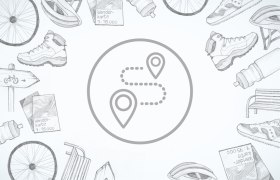Opis
Take a history tour of Tulln, a town known for its gardens and art: You will explore, among other things, the Church of the Friars Minor in Late Baroque style plus the parts of Tulln dating to Roman times. At the Stadtmuseum Tulln, which also houses the Tulln Roman Museum, documentation pertaining to the imperial convent, and the Stadtmuseum Tulln Virtulleum, you will learn even more about the time when the town was still known as Comagena. Schedule ample time for visits to the Egon Schiele Museum and the Egon Schiele birthplace or for strolling along the Egon Schiele Special Theme Trail or through GARTEN TULLN (model gardens, treetop trail, water park).
You then head for Vienna, pedaling by the extensive Stockerau wetlands. At the Greifenstein power station, you may want to take a break to visit nearby Stockerau, a town known for its summer theater. Climb the church tower there, for instance. It is Lower Austria’s highest. You see the two fortresses Greifenstein and Kreuzenstein on either side of the Danube initially far off, then looming ever closer. Soon after passing the Greifenstein power station, you arrive in the Korneuburg, “Town of the Pied Piper”.
Legend has it that a Pied Piper rid Korneuburg of rats but was cheated out of his pay. To get revenge, he enticed the town’s children away. The Pied Piper Fountain in front of the Neo-Gothic town hall is a reminder of this tale. The main square (Hauptplatz) is lined with patrician homes and dominated by the massive medieval city tower. After a look at the Augustinian Church with its ceiling fresco by the 18 c Austrian Rococo master Franz Anton Maulbertsch, you leave this small town. Before you know it, Vienna comes into sight.
When you finally cross to the Danube Island, you know you are on Viennese soil. This 21 km long island was built between 1972 and 1988 as part of a flood control system and recreational area for Vienna and its now nearly two million people. That explains why you pass inviting beaches, playgrounds and grilling sites on the last few meters before reaching the Nordbrücke, the bridge that is your destination for this stage.
Punkt początkowy trasy
Tulln
Punkt docelowy trasy
Vienna/North Bridge
Opis drogi Danube Cycle Path, stage 7, north bank: Tulln - Vienna/North Bridge
Tulln - Korneuburg - Vienna
Route description:
In Tulln you should definitely visit the Egon Schiele Museum on Donaulände. It features oil paintings, watercolors and drawings that this fin de siècle artist did as a child and adolescent. The Egon Schiele birthplace is at the train station. Right at the beginning of your tour you cross the Tulln bridge over the Danube to get to the other side. There you rid along the Danube Bike Path toward Vienna through the unspoiled nature of Gemeindeau until just before the Greifenstein power station. You follow the road to the left and then bear to the right again shortly thereafter to return to the banks of the Danube.
Just before Korneuburg, the trail branches off to the left. You follow the street “Zum Scheibenstand” and turn right onto Werftstrasse. Alternatively, you can also go straight here and explore the distinctly Gothic historical center of Korneuburg. From there it is not far to Vienna. In fact, you can already see part of its skyline. At the end of Werftstrasse, you bear left and then right again, continuing on Donaustrasse until arriving at Einlaufbauwerk Langenzersdorf, the first of the three weirs in the New Danube. You cross the bridge to the Danube Island and follow the path to the Nordbrücke (bridge), which is your destination for the day. After this tiring stage, a piece of a Sacher Torte (cake) in a cozy Vienna Cafe will have never tasted better.









